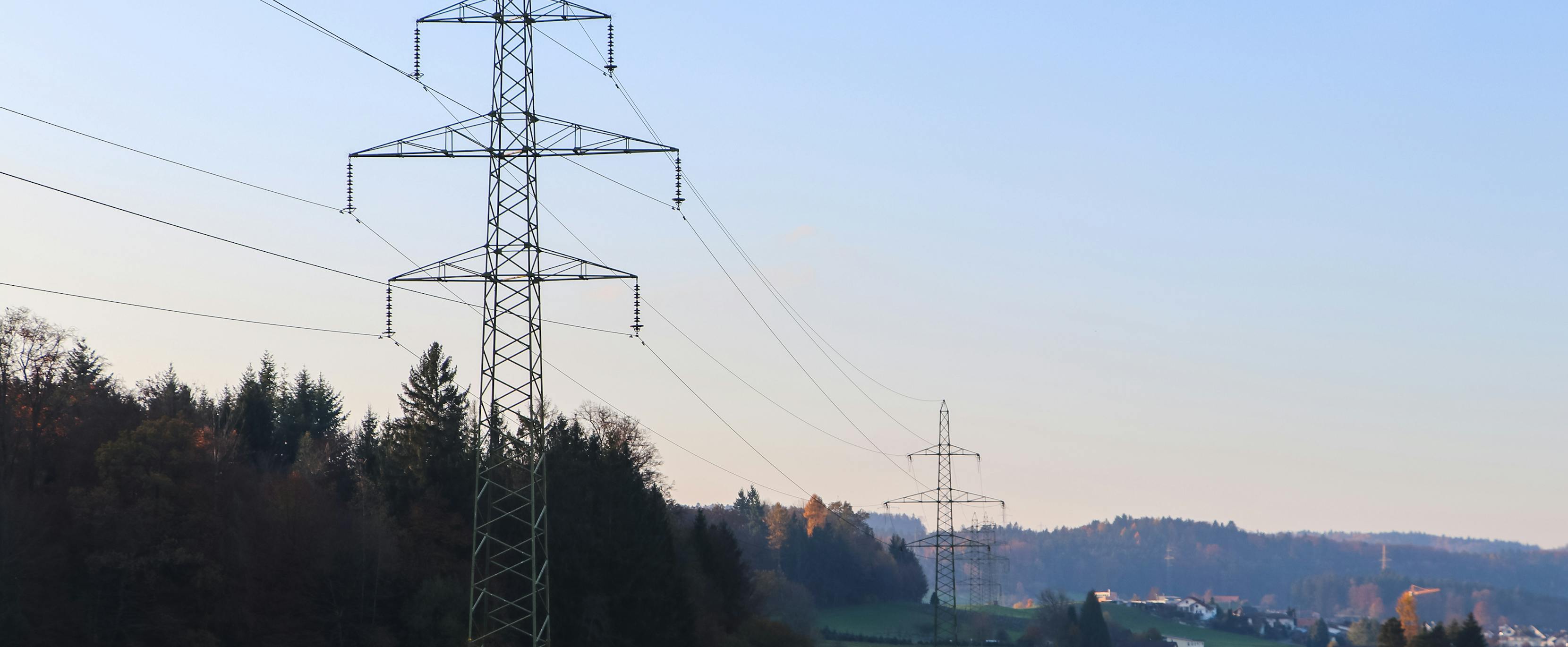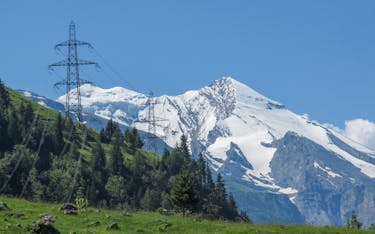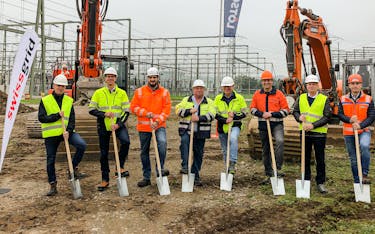People & environment
Landscape
Overhead line
Overhead lines are visible objects in the landscape and can have a negative impact on the landscape depending on their location. The interventions must be assessed by the federal government and the cantons in accordance with the protection objectives and the consideration of compliance with the federal tasks (ensuring the supply of energy).
Underground line
Underground cables are generally assessed more favourably in relation to the landscape than overhead lines. While the cable route is not visible on open terrain, it remains clearly visible in forested areas as a necessary zone without deep-rooted and high trees must be maintained.
Forests
Overhead line
Interventions in groves by route clearing and/or the suppression of growth. Higher pylons make it possible to cross above the forest. However, the effects on the landscape are greater. The land under overhead lines can be used for agricultural purposes.
Underground line
Interventions in groves are greater than the interventions required for an overhead line due to the need for route clearance. The cable route is clearly visible in the forest because, for underground cables, the area above the line has to be kept free of high trees and deep-rooted plants. The soil above the underground cable can be used for agricultural purposes.
Soil
Overhead line
Soil sealing takes place on a small scale around the pylon foundations. Temporary interventions, especially around the pylon locations, during the construction phase.
Underground line
Extensive impact during the construction phase. Around 20,000 m2 of soil is impacted to construct an underground line 1 kilometre long (construction, installation locations, construction tracks). Depending on the electricity load, the electrical losses heat the underground cable and the surrounding soil. Measuring installations are used to measure and monitor the soil temperature. Soil sealing takes place on a small scale around the coupling shafts.
Noise
Overhead line
The noise emissions are caused by electrical discharge on the conductors (corona noises), which occur on high-voltage overhead lines under certain weather conditions, such as fog, rain or snow.
Underground line
In the operating phase, the noise emissions originate from compensation systems. Compensation systems emit a humming noise similar to transformers.
Electromagnetic fields
Overhead line
The magnetic field depends on the current and the phase arrangement of the conductor. In an overhead line, the limit of 1 microtesla is complied with from a distance of about 60 – 80 metres from the line axis.
Underground line
In underground cables, the magnetic field depends on the current, the installation depth and the cable arrangement. The spatial expansion of the magnetic field is lower than for overhead lines, but the strength directly over the underground cable is much higher than under an overhead line. The limit of 1 microtesla is complied with from a distance of about 6 – 8 metres from the line axis of the underground cable. The magnetic field can amount to more than 100 µT directly above the line. A value of 100 μT must not be exceeded from a soil distance of 20 cm.
Electrical losses
Electric power transmission leads to electrical losses. A small portion of the power is transformed into heat. The voltage causes losses as well. With overhead power lines, these are known as «corona losses,» because the air serves as an insulator. In cables, it is the insulating material that conducts a small portion of the power, likewise resulting in losses. Since cables have a significantly larger cross section than overhead lines, they experience much lower conductor losses than the latter. However, the interplay of cable and grid generates reactive power, which has to be compensated for. These losses are much higher with cables than with overhead lines.










